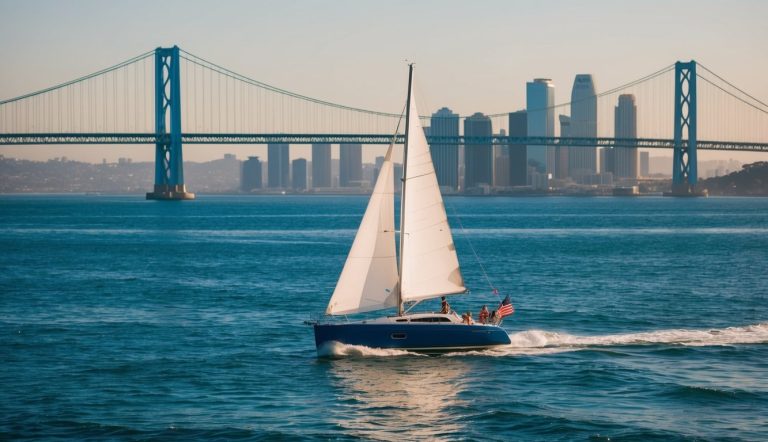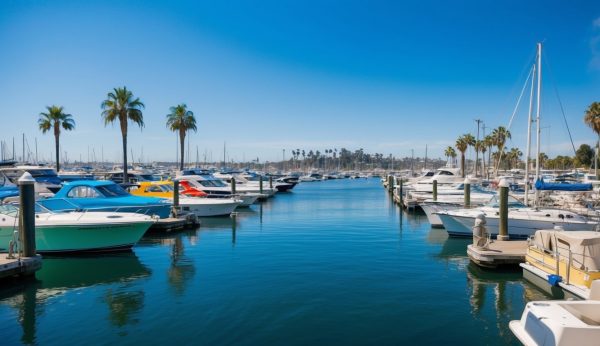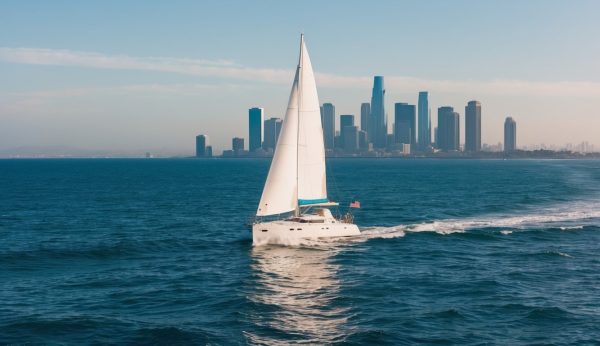San Diego offers excellent boating opportunities with its perfect weather and beautiful coastline. Before heading out on the water, you’ll need to understand the local maritime environment, choose the right vessel, and follow essential safety practices. Let’s explore the world of using boats in San Diego, CA!
Understanding San Diego’s Maritime Landscape
- San Diego Bay is one of the finest natural harbors on the West Coast, spanning over 12 miles with varying depths perfect for different vessels. The bay is divided into several areas including Shelter Island, Harbor Island, and the Embarcadero, each offering unique boating experiences.
- Point Loma marks the western entrance to the bay, protecting it from rough ocean conditions. This geography creates a perfect setting for both novice and experienced boaters.
- The bay features numerous marinas where you can dock your boat or rent one for the day. Popular spots include Shelter Island Marina and Harbor Island Marina, which provide easy access to the water and nearby amenities.
- Weather considerations: San Diego typically enjoys mild conditions year-round, but morning fog can occur, especially during May and June. Afternoon winds often pick up, particularly in the summer months.
Types of Boats Available for Ocean Boating
Various boat types suit different activities in San Diego waters:
Powerboats:
- Runabouts: Perfect for day trips around the bay
- Fishing boats: Equipped for both bay and ocean fishing
- Cabin cruisers: Ideal for longer excursions
Sailboats:
- Small dinghies: Great for learning sailing basics
- Keelboats: More stable for San Diego Bay exploration
- Catamarans: Offer speed and stability for more experienced sailors
If you’re new to boating, renting is an excellent option before committing to ownership. Many local companies offer rentals by the hour or day, with some providing captained charters for those without boating experience. For beginners, pontoon boats provide stability and ease of operation while you get comfortable with maritime navigation and rules.
Essential Boating Safety Measures
Safety must be your priority when boating in San Diego. California law requires life jackets for everyone onboard, with children under 13 needing to wear them at all times while on deck.
Required safety equipment:
- Life jackets for all passengers
- Throwable flotation device
- Fire extinguisher
- Visual distress signals
- Sound-producing device
Before heading out, check weather forecasts and tides. San Diego Bay conditions can change rapidly, especially when afternoon winds pick up. Taking a boater safety course is highly recommended and may be required depending on your age. These courses teach essential navigation rules, emergency procedures, and local regulations. Stay within designated boating channels in the bay, keeping clear of large commercial vessels that have limited maneuverability. Be aware of no-wake zones, particularly around marinas and environmentally sensitive areas.
Navigating the Waters: San Diego Bay and Beyond
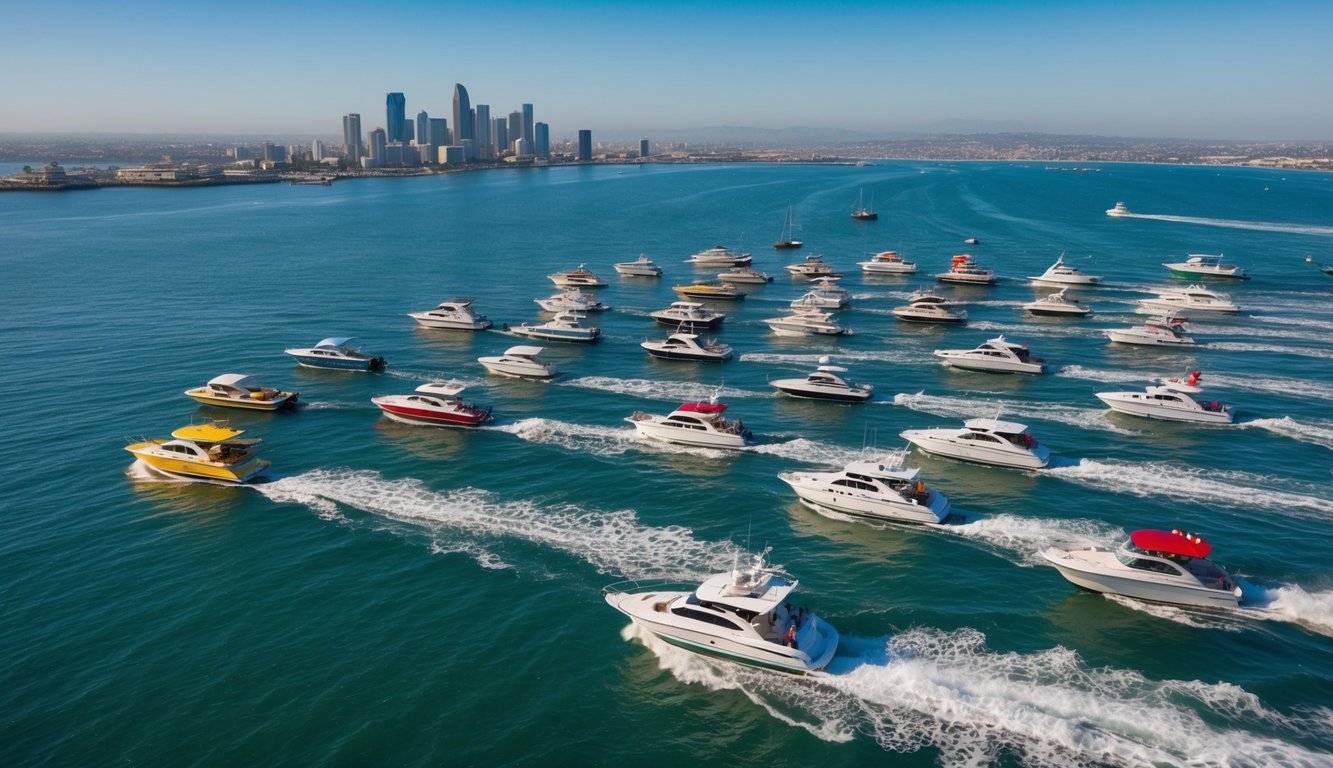
San Diego offers diverse boating waters with unique features and attractions. From the protected harbor areas to open ocean adventures, each waterway provides different experiences for boaters of all skill levels.
Cruising Around Harbor Island and Point Loma
- San Diego Bay provides protected waters perfect for casual cruising. When navigating this area, you’ll need to be mindful of the heavy commercial traffic and naval operations that share these waters.
- Harbor Island offers excellent views of the downtown skyline and several marinas where you can dock for lunch. The western side of Point Loma provides a dramatic coastline with rocky cliffs and the historic lighthouse.
- Navigation here requires attention to channel markers and designated zones. You should carry updated charts and watch for the regular ferry traffic crossing between downtown and Coronado. Many boaters enjoy the calm morning waters before afternoon winds pick up.
Exploring Mission Bay and Oceanside
- Mission Bay presents a more relaxed boating environment with its network of channels and coves. This area is popular for watersports due to its calmer conditions. The bay has well-marked channels, but pay attention to depth variations, especially during low tide.
- Venturing north to Oceanside requires open ocean travel, so check weather forecasts before departing. Oceanside Harbor provides a welcome rest stop with full services for boaters.
- When cruising between these areas, keep a safe distance from shoreline areas with swimmers and surfers. Several navigation apps can help track your position and alert you to hazards or changing conditions. Mission Bay’s protected waters make it ideal for beginners practicing their navigation skills.
Adventures to Catalina Island and Ensenada
- Longer voyages to Catalina Island or Ensenada require careful planning and open-water navigation skills. Catalina lies approximately 70 nautical miles from San Diego, offering several anchorages and moorings at Avalon and Two Harbors.
- For international cruising to Ensenada, you’ll need proper documentation including passports and a Mexican fishing permit if applicable. The journey takes 6-8 hours depending on conditions and your vessel speed.
- Before attempting these crossings, ensure your boat is ocean-ready with safety equipment and reliable communication devices. Many boaters use the “one-third rule” for fuel: one-third for the journey out, one-third for the return, and one-third in reserve. Weather conditions can change quickly in these waters, so maintain regular checks of marine forecasts.
Seasonal Considerations for Ocean Boating
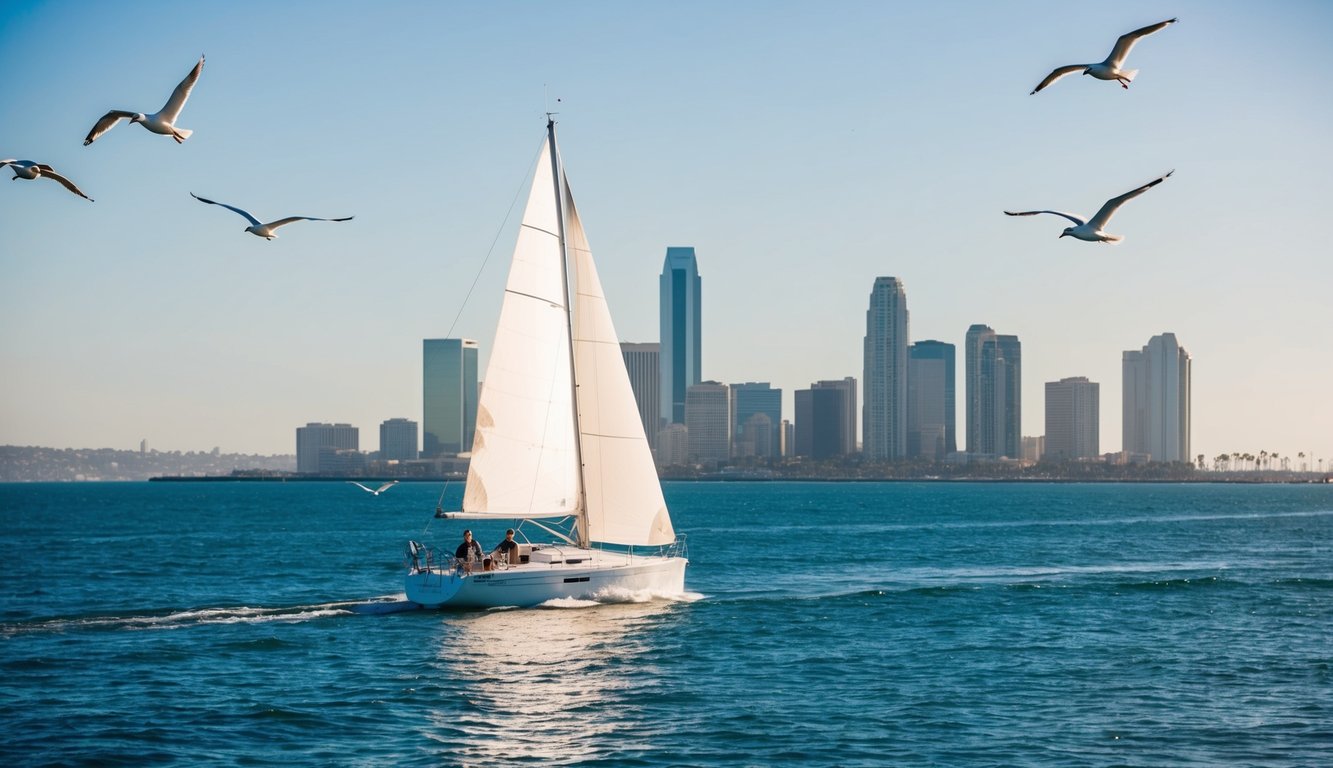
San Diego offers year-round boating opportunities, but each season brings unique conditions that affect your boating experience. Understanding these patterns helps you plan safer and more enjoyable trips on the water.
Navigating Weather and Seasonal Patterns
San Diego’s boating season technically runs all year, but conditions vary significantly. Summer (June-September) offers the most predictable weather with average temperatures in the 70s and calm seas, making it ideal for most recreational activities. Spring brings variable conditions with occasional rain and wind. Morning fog is common in May and June (known as “May Gray” and “June Gloom”), which can reduce visibility for early departures.
Fall provides some of the best boating days with warm water temperatures and fewer crowds. Water conditions are typically good to average during this period. Winter (December-February) can deliver challenging conditions with occasional storms and higher swells. These months might present poor or terrible boating conditions during storm systems, but clear days between storms can offer surprisingly pleasant experiences.
Recreational boaters should always check marine forecasts before heading out, as conditions can change rapidly. The official boating season at many marinas runs May through mid-September, though this varies based on weather.
Remember to bring appropriate gear for your season:
- Summer: Sun protection and cooling options
- Spring/Fall: Layered clothing for temperature changes
- Winter: Waterproof gear and extra safety equipment
